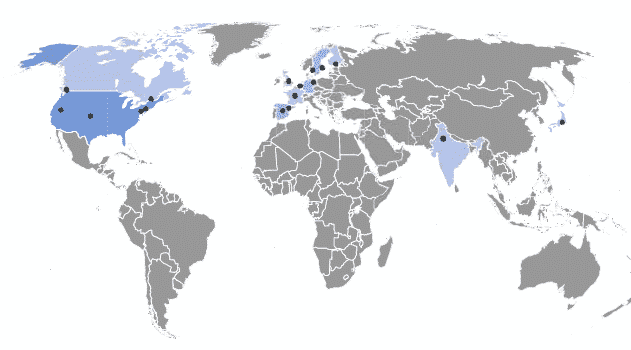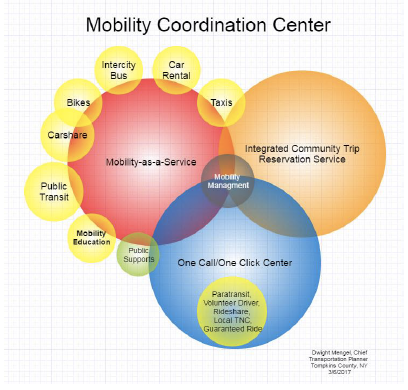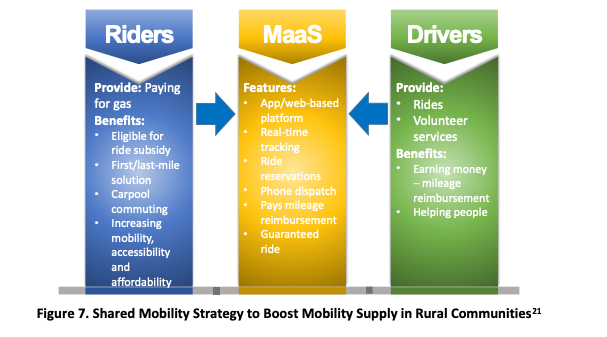Expansive Mobility-as-a-Service Initiative Launches in Rural Scotland
- Author: Edward Graham
- Date: October 20, 2021
ScotRail trains, one of Scotland’s many mobility options, arrive and depart from a station in rural Scotland. By giving riders…
Content in this document is disseminated by NCMM in the interest of information exchange. Neither the NCMM nor the U.S. DOT, FTA assumes liability for its contents or use. The opinions expressed herein are those of the author and not of the National Center for Mobility Management.
Imagine opening an app on your smartphone showing you all the different options of getting from A to B.
You can see all the bus routes in one place no matter if they’re your own community’s or the neighboring one. You can easily identify whether a taxi, an Uber or a volunteer driver could pick you up fastest. You could even book a carshare vehicle if you had to do a large grocery run or a shared bike if you feel athletic. On top of that, you have access to a customer service program that backs whatever ride you just booked with a guarantee – 24/7!
Sounds like a dream? Welcome to a concept called Mobility-as-a-Service (MaaS): the freedom of getting anywhere, whenever you want, with a click of a button. The MaaS Alliance has defined MaaS as “the integration of various forms of transport services into a single mobility service accessible on demand. Customers have access to a menu of transport options, be they public transport, ride-, car- or bike-sharing, taxi or car rental/lease, or a combination thereof.”
Real-world MaaS projects are still rare. The few that are up and running are scaled down versions: for example, Boston offers an integrated trip planner and Portland has created a unique mobility wallet program. Yet both cities are home to more than 600,000 residents.

In rural areas the adoption of MaaS will “happen at a slower pace than in cities,” as AARP stated in its 2018 report on the Future of Transportation Universal MaaS.
The description in the opening paragraph of this post is actually not taken from a city. Instead, it describes what is currently being implemented in Tompkins County, New York.
With a population of just over 30,000 inhabitants (over 60,000 when Ithaca College and Cornell University are in session), Ithaca is not your typical Mobility-as-a-Service city. But their MaaS program, under the leadership of the county’s Department of Human Services Chief Transportation Planner Dwight Mengel, has garnered national and international recognition. Jenny Milne, a rural MaaS PhD researcher with the University of Aberdeen, Scotland states that “the Tompkins County’s MaaS solution is currently the Gold Standard for rural MaaS globally”.
Dwight’s vision is grounded in the best possible customer experience and service. From there he built out what is called the Mobility Coordination Center (see image below) focusing on three key areas: 1) bringing together any mobility service available in a community, 2) an integrated trip planner where information about the different services is easily displayed, and 3) a customer service center offering 24/7 service.

The county has received funding from the FTA to build out phase 1 of this vision. They will use the funds to develop a multi-modal trip planner that integrates information on bus services, demand-response service, taxis, volunteer transportation, car-share and bike-share services. In addition, the grant will be used to implement a 24/7 call center and deploy a guaranteed ride program.
Of course, one of the biggest limitations in rural areas is the lack of available mobility options: Public transit offerings are often sparse and less well funded than in urban centers. In many cases private operators and volunteer organizations step in and provide alternatives. Often these alternative offers are less frequent and quite disjointed, which in turn results in underutilized vehicles, driving up cost for consumers.
The Tompkins County MaaS solves this problem in a unique way by facilitating an increase in supply through MaaS. The graph below, taken from the National Center for Applied Transit Technology’s latest report, visualizes how this increase would work. The green column shows how individuals can become volunteer drivers and receive benefits resulting in an increase in the supply of transportation. The blue column shows how the boost of supply will eventually result in improved mobility for travelers.

Together, riders and drivers increase the depth of MaaS and the ability for it to be a more reliable system that can commit to excellent customer service.
Another example of Mobility-as-a-Service in a rural context is the AARP Ride@50+program in Columbia, South Carolina; Dallas; and Washtenaw, Michigan. The objective of the Ride@50+ Program is to offer all public and private transportation options in one place so a more senior demographic can access health care, employment and essential resources without driving themselves. The program brings together public transit, taxi, rideshare and volunteer driver options – and all of these services can be booked by phone, through a website or an app.
The key to success for this program, according to Valerie Lefler, who runs Feonix the Mobility-as-a-Service provider behind the program, was to get the community involved right from the beginning. As she says, “It’s not about ‘build it and they will come,’ it’s about ‘build it together from day one.’ Because if the community is not in the driver’s seat and invested in the outcomes, the program will not last and be sustained.”
This is also true for urban MaaS programs, but in a rural context it is vital. Seattle for instance has over 20 different taxi companies and several on-demand shuttle providers. So if a few decide not to join the MaaS offering, the end user won’t notice it at all. But if you only have one taxi operator providing service in a rural community, then you have to get them onboard.
Ultimately MaaS is a Swiss Army Knife for personal mobility: Having the right tool for the right job is what sells a Swiss Army Knife, and we need the right modes and options for the right journeys. And this applies whether you’re in a rural or in an urban context. But if we want to provide better customer experiences, we have to increase the supply of transportation options in rural areas and we need to give those communities a seat when we design and discuss Mobility-as-a-Service. If we do that, MaaS has the potential to be the Swiss Army Knife for personal mobility in rural areas.
ScotRail trains, one of Scotland’s many mobility options, arrive and depart from a station in rural Scotland. By giving riders…
goHunterdon, a Transportation Management Association in Hunterdon County, NJ partners with a local healthcare provider to provide free Lyft and…
Many years ago, the Missouri Rural Health Association saw an unmet need for rural Missourians and took on the task…
To better support residents in need of assistance, states across the country are establishing coordinated care and resource referral networks…
In 2017, the Montgomery County, MD County Council passed a resolution mandating a 100% reduction in the carbon emissions from county-owned transit and buildings by 2035. This was an expensive challenge, so the County’s Departments of General Services (DGS) and Transportation (DOT) had to get creative. The County partnered with private energy as service provider AlphaStruxure and a private equity firm to fund all upfront costs. Fleet costs are being subsidized by the federal government.
Have more mobility news that we should be reading and sharing? Let us know! Reach out to Sage Kashner (kashner@ctaa.org).
There was a problem reporting this post.
Please confirm you want to block this member.
You will no longer be able to:
Please note: This action will also remove this member from your connections and send a report to the site admin. Please allow a few minutes for this process to complete.

